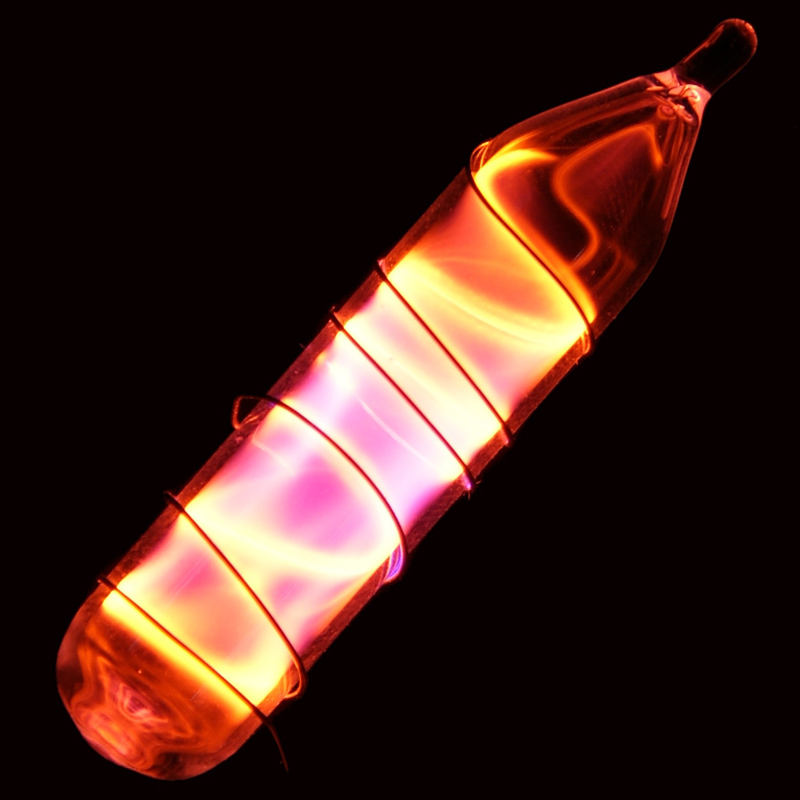Neon
10
Ne
Group
18
Period
2
Block
p
Protons
Electrons
Neutrons
10
10
10
General Properties
Atomic Number
10
Atomic Weight
20.1797
Mass Number
20
Category
Noble gases
Color
Colorless
Radioactive
No
From the Greek word neos, new
Crystal Structure
Face Centered Cubic
History
Neon was discovered in 1898 by the British chemists Sir William Ramsay and Morris W. Travers in London.
It was discovered when Ramsay chilled a sample of air until it became a liquid, then warmed the liquid and captured the gases as they boiled off.
After 1902, Georges Claude's company, Air Liquide, was producing industrial quantities of neon as a byproduct of his air liquefaction business.
It was discovered when Ramsay chilled a sample of air until it became a liquid, then warmed the liquid and captured the gases as they boiled off.
After 1902, Georges Claude's company, Air Liquide, was producing industrial quantities of neon as a byproduct of his air liquefaction business.
Electrons per shell
2, 8
Electron Configuration
[He] 2s2 2p6
In a vacuum discharge tube, neon glows reddish orange
Physical Properties
Phase
Gas
Density
0.0008999 g/cm3
Melting Point
24.56 K | -248.59 °C | -415.46 °F
Boiling Point
27.07 K | -246.08 °C | -410.94 °F
Heat of Fusion
0.34 kJ/mol
Heat of Vaporization
1.75 kJ/mol
Specific Heat Capacity
1.03 J/g·K
Abundance in Earth's crust
3×10-7%
Abundance in Universe
0.13%

CAS Number
7440-01-9
PubChem CID Number
23935
Atomic Properties
Atomic Radius
38 pm
Covalent Radius
58 pm
Electronegativity
-
Ionization Potential
21.5645 eV
Atomic Volume
16.7 cm3/mol
Thermal Conductivity
0.000493 W/cm·K
Oxidation States
0
Applications
Neon is often used in brightly lit advertising signs.
It is also used in vacuum tubes, high-voltage indicators, lightning arrestors, wave meter tubes, television tubes, and helium-neon lasers.
Liquid neon is used as a cryogenic refrigerant.
It is also used in vacuum tubes, high-voltage indicators, lightning arrestors, wave meter tubes, television tubes, and helium-neon lasers.
Liquid neon is used as a cryogenic refrigerant.
Neon is not known to be toxic
Isotopes
Stable Isotopes
20Ne, 21Ne, 22NeUnstable Isotopes
16Ne, 17Ne, 18Ne, 19Ne, 23Ne, 24Ne, 25Ne, 26Ne, 27Ne, 28Ne, 29Ne, 30Ne, 31Ne, 32Ne, 33Ne, 34Ne